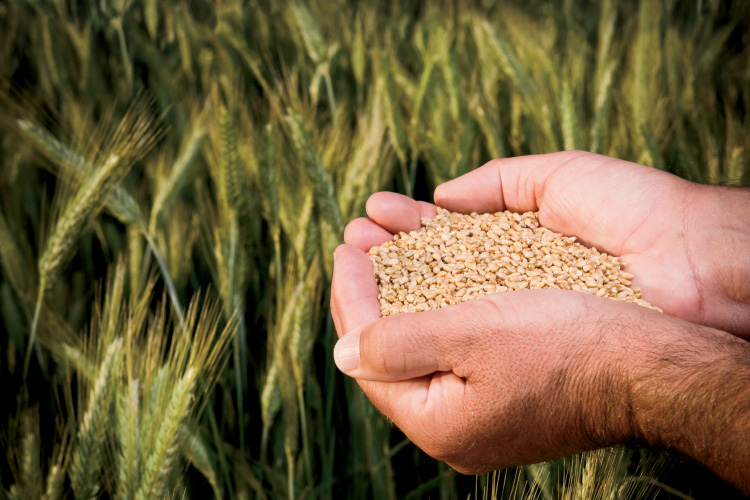Home > Virginia > Virginia Crops & Livestock > Golden Grains of Virginia
Golden Grains of Virginia
In partnership with: Virginia Department of Agriculture and Consumer Services

The amber waves of grain that make up the fields of Virginia are at the heart of the state’s agriculture industry. Sorghum grain for livestock feed, wheat for milling and the growing malt barley industries all play key roles in contributing to the state’s economy.
Dr. Carl Griffey, W.G. Wysor professor of Crop Genetics and Breeding at Virginia Tech, has worked firsthand with both traditional and specialty varieties of wheat and barley for the past 27 years. In 2014, Virginia farmers planted 260,000 acres of wheat and 56,000 acres of barley, according to latest U.S. Department of Agriculture data. Dr. Griffey says it is an exciting and changing time for grain production.
“These industries are very significant to Virginia’s economy,” Dr. Griffey says. “Being on the coast, grain can either go through the export market or enter a variety of other domestic markets including the flour milling, malting, poultry and swine industries.”
Dr. Griffey says there are currently no genetically modified traits in either wheat or barley. For this reason, much of his research is focused on DNA and genomics for breeding.
“We are using DNA markers to select for critical traits that have been mapped to specific chromosome regions. If we know an important trait is on a certain chromosome, we can select for that trait in the lab at the seedling stage to improve disease resistance and other traits in our varieties,” Dr. Griffey says.
Over time, one of the greatest challenges with barley production has been the lack of a good market. However, increased consumer demand for craft beer and whiskey has led to an increased interest in barley production among Virginia grain producers.
“Farmers generally do not receive an optimal price for feed barley, so growers do not get excited to grow it. We recently started working with malting barley as that is a growing interest in the eastern U.S.,” Dr. Griffey says.
Because Dr. Griffey works so closely with breeding, his research is ongoing. Currently, his five graduate students are working on projects, including mapping resistance genes for fusarium head blight, leaf and stripe rusts, as well as association mapping to link traits of interest in crops to genomic markers. Research such as the work Dr. Griffey and his students have done continues to progress these grains to more profitable, efficient crops.
Dr. Griffey says he is thankful for every organization that has invested in the university’s research and development of improved small grains.
“The success of our breeding program is due to the fact we have strong stakeholder support in the state,” Dr. Griffey says. “We are thankful for the funding we receive.”



